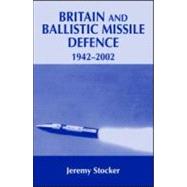- ISBN: 9780714656960 | 0714656968
- Cover: Hardcover
- Copyright: 7/15/2004
Britain was the first country to come under sustained ballistic missile attack, during 1944-45. Defense against ballistic missiles has been a persistent, if highly variable, subject of political policy and technical investigation ever since. The British Second World War experience of trying to counter the V-2 attacks contained many elements of subsequent responses to ballistic missile threats: an uncertain intelligence picture; the establishment of an early-warning system; a counter-force campaign to destroy rockets on the ground; passive defense measures to ameliorate the effects of missile strikes; and elaborate but untried active defenses to intercept missiles in flight. After the war, a reasonably accurate picture of Soviet missile capabilities was not achieved until the early 1960s, by which time the problem of early warning had largely been solved. Early British efforts to develop active defenses, however, foundered because of the formidable technical challenges and limited resources, butsome defenses were established by the Americans and the Soviets. From the mid-1960s on, British attention shifted away from the development of the country's own defenses towards the wider consequences of US and Soviet deployments. British concerns centered around the implications of active defense for strategic stability, the arms-control process and the credibility of the UK's small nuclear deterrent. The British government had to respond three times to American defense programs, though each time its worries were ultimately assuaged. Soviet defenses around Moscow were more problematic and resulted in a sophisticated and expensive project - Chevaline - to overcome them. After the end of the Cold War there was renewed interest in a limited active-defense capability against Third World missile threats. A series of technical and policy studies has yet to result in a procurement decision, but looks increasingly likely in coming years. This well-researched book is primarily aimed at students of post-warBritish foreign and defense policies, but will also be of interest to informed general readers.






